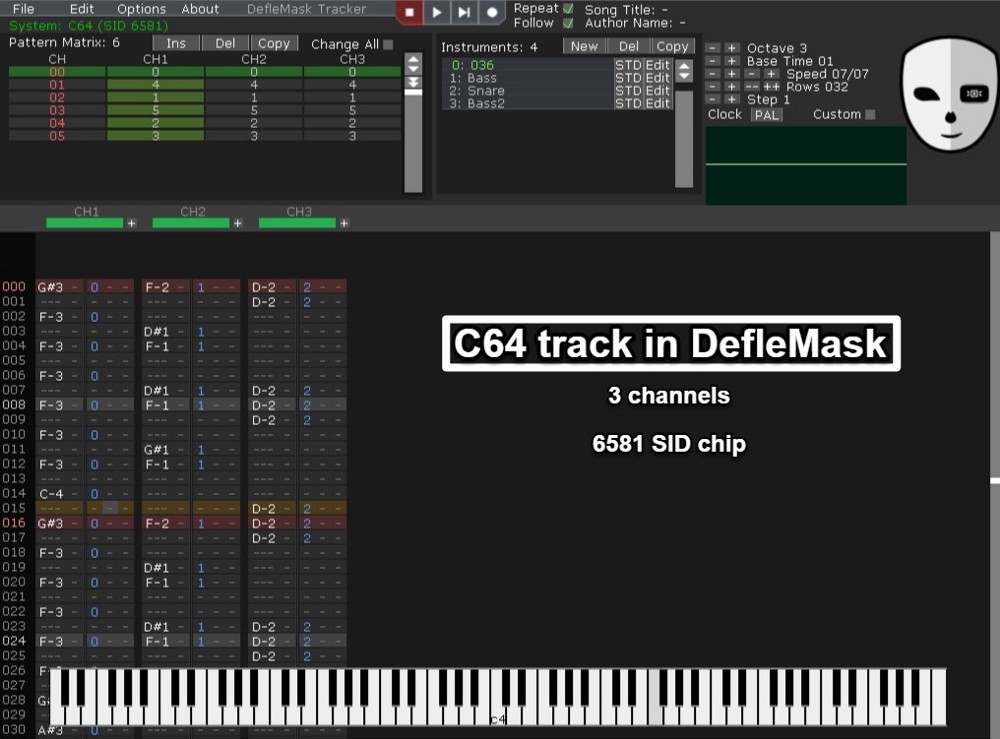Commodore 64
Release Date: 1982
Five years after the Atari exploded on the home console scene, the Commodore 64 was released. The C64 is hailed as being responsible for bringing a new technology to middle-class households by being affordable, mass-produced and was available in normal retail stores rather than just electronic shops. The Commodore is a bit different to the Atari we looked at last episode because it wasn’t just a video game console, it was a fully functional home computer! It had a powerful 1 MHz processor, could display graphics at a 320 x 200 resolution and got its name from the 64 KB of RAM, allowing it to run software like word processors as well as play games.
Let’s move on to the sound of the system. In the Commodore, we’ve got the SID chip which simply stands for Sound Interface Device. This allowed us to progress from the 2 channel TIA chip of the Atari to being able to write for 3 audio channels with each channel having its own filter capabilities on it! There were 2 versions of the SID chip; the 6581 and the 8580. The 8580 replaced the original 6581 in 1987 but from the Googling I’ve done, nearly everyone prefers the older 6581. It sounded a lot clearer and had some clever little hacks you could do with it to produce a 4th channel of sound. To hear the stark difference between the two chips, check out the below video.
Before we get on to writing for the system, let’s have a listen to a quick clip of some classic Commodore 64 game music tracks. This track is awesome for so many reasons. It’s a fully realised masterpiece with different sections, plenty of melody and makes the most use out of the 3 channels. Below that is a link to a YouTube playlist full of Commodore 64 music for your listening pleasure!
Now, let’s move on to writing music for the Commodore. We’ve got our 3 channels, so how do we write for them? If you want an accurate recreation of the Commodore sound, I’d definitely recommend checking out a piece of software called DefleMask. DefleMask is a tracker and is another way of writing and visualising game music using a table view instead of using a DAW. Each column in the table represents a channel on the game system so for the Commodore you’ll have 3 columns. The instrument is chosen using a single digit like 1 for bass, 2 for snare and you input the notes using their musical names like G sharp. When you play the track back, the program runs down the table columns and plays each row one after the other. Using a tracker like DefleMask, you can accurately recreate music for gaming systems like the SEGA Mega Drive,SEGA Master System, GameBoy, NES, Commodore 64 and Arcade System. You can even choose if you want to use the 6581 or 8580 chip on the Commodore!

So, after all of that, I will leave you with a piece I wrote for the Commodore 64 using DefleMask. As a quick side note, DefleMask is meant to be coming to mobile very soon! There are already videos of it in its beta form so look out for that in the coming weeks or months.
Thanks for taking the time to stop by,
Will
–
Find me on social:
